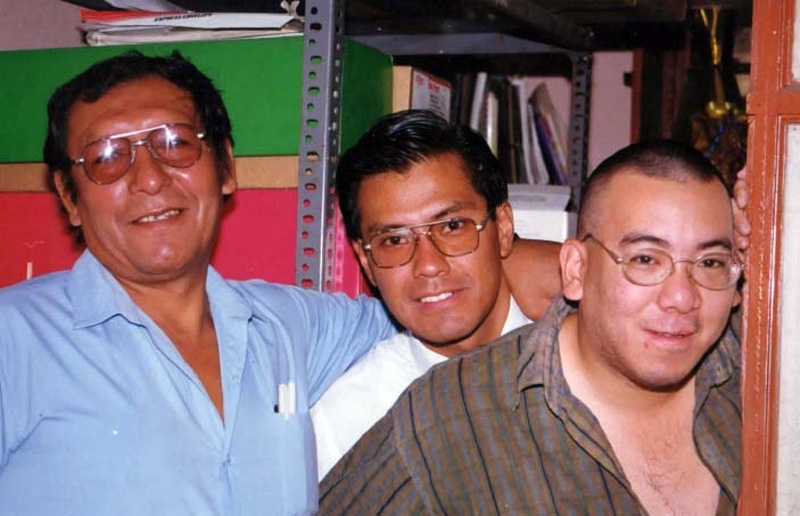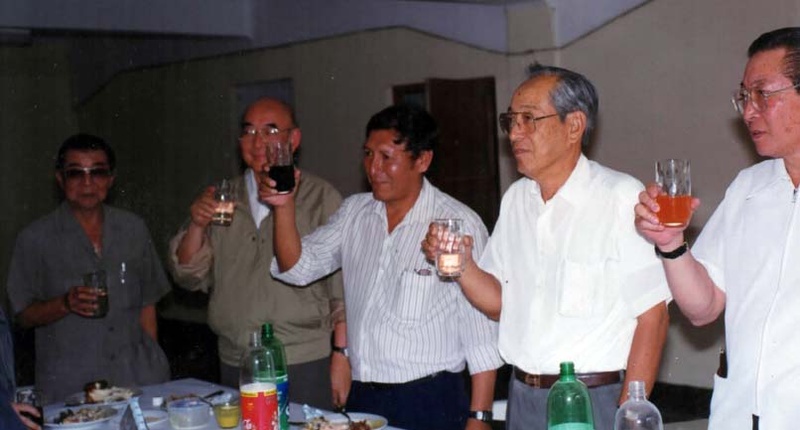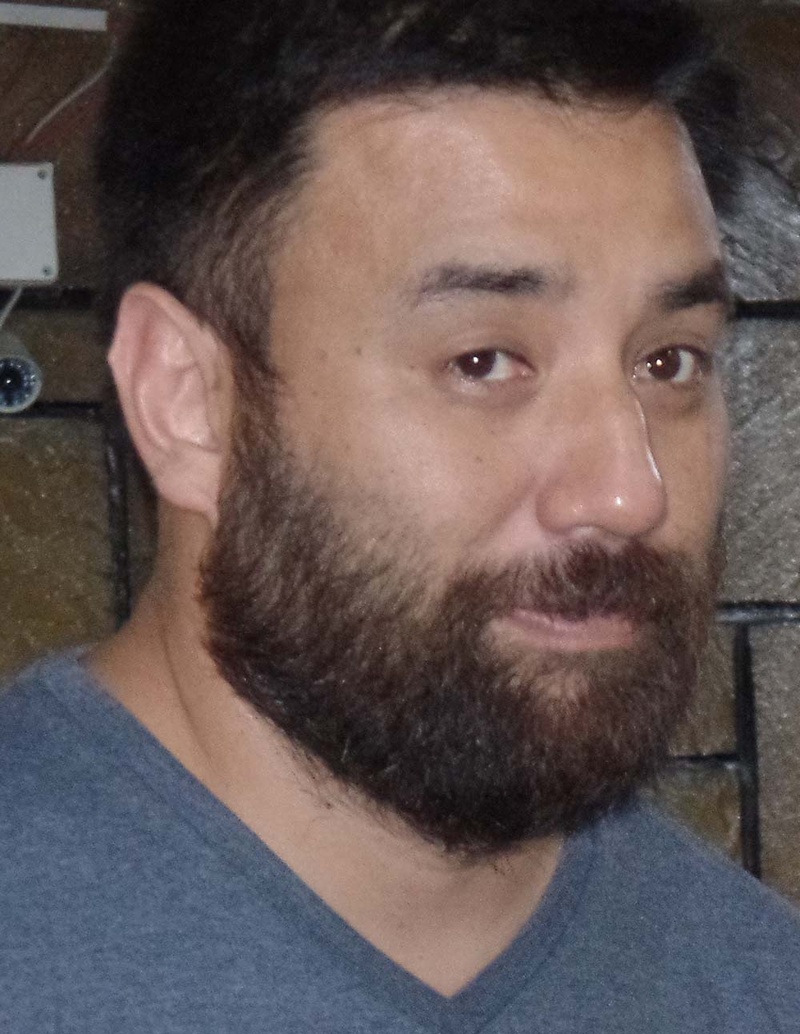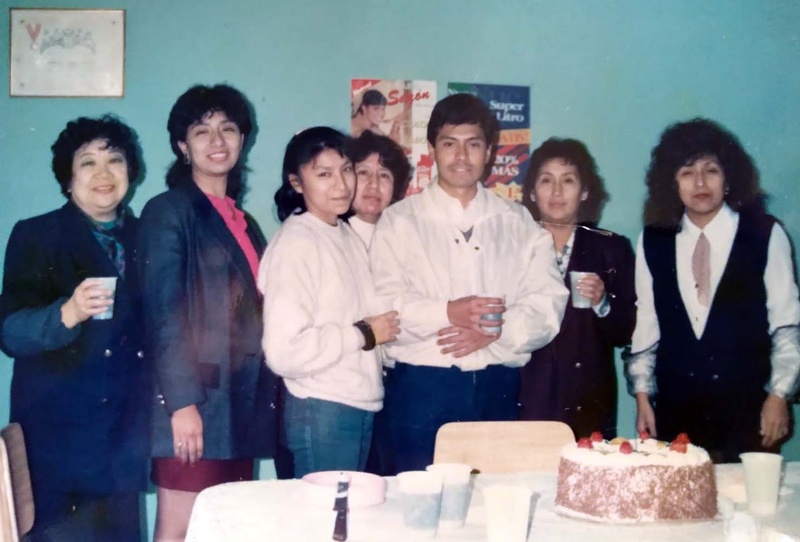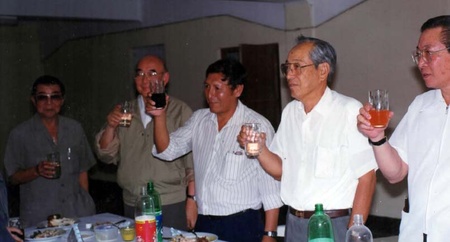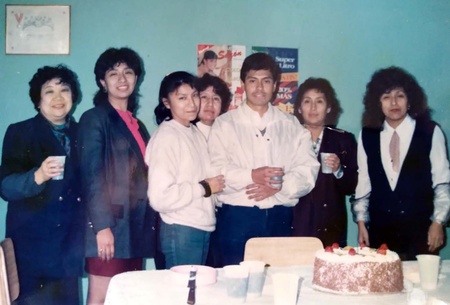The Second World War was a disaster for the Japanese community living in Peru. In addition to the deportation to the United States of almost 1,800 people, it led to the closure of schools and institutions, among other measures implemented by the Peruvian government—aligned with that of the United States—against the Japanese and their descendants due to their ethnic origin.
One of these attacks deprived the Peruvian-Japanese community of information media. After the war ended, there was a sector of Japanese immigrants who did not believe in Japan's defeat and for several years stoked the atmosphere in the colony by spreading a false narrative: that their country had won.
In this context, in which a source of truthful information was urgently needed, Diro Hasegawa, a Japanese immigrant deported to the United States who managed to return to Peru during the post-war period, embarked on the mission of creating a newspaper for the community. He toured the country in search of support from the Japanese, and thanks to his vision and determination , Peru Shimpo was born in July 1950.
It is impossible to tell the story of the Nikkei community in Peru without Perú Shimpo , not only because it has been X-rayed since the middle of the last century, but also because its birth and subsistence obey the drive and solidarity of a group with more than 120 years of existence. .
The newspaper founded by Diro Hasegawa has turned 70 years old in an anomalous situation for the world. Despite the difficulties posed by the coronavirus, the strict restrictions and the economic precariousness derived from the quarantine of more than one hundred days in the country, Peru Shimpo continues.
Four journalists who have been part of the history of the Nikkei media for decades share their experiences in the newspaper and value its importance in the community and what it means in their lives, both professionally and personally.
FROM THE PRINTING PRESS TO THE AELU
Mario Teves entered Peru Shimpo on October 3, 1968, a capital date not only for him, but also for Peru, as it was the day a military dictatorship was established that kept the country away from democracy for twelve years.
The day the history of Peru changed, as well as his life, Mario began working as a typesetter for the Spanish section of Perú Shimpo . His job was to compose the words letter by letter for later printing.
Under the nationalist regime of General Juan Velasco Alvarado, the newspapers had to be directed by Peruvians by birth. Thus, Mario witnessed how Perú Shimpo passed from the hands of the Japanese to his Peruvian descendants. The first Nikkei president of the newspaper's board of directors was Dr. Luis Tsutomu Ito, author of the so-called Libre Verde , an essential work in documenting the history of Japanese immigration to Peru.
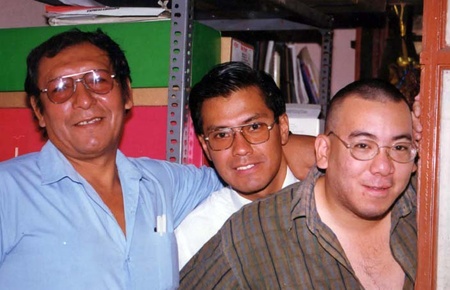
Mario never imagined that he would work for more than 50 years at Perú Shimpo . “I entered with the intention of working for a few years and seeking new horizons, so I started studying architectural drawing. At the end, they offered me jobs mostly in the provinces, one in Chiclayo and another in Huancavelica, but because of my mother I stayed,” he says. His mother, he comments in passing, turned 101 years old on May 8.
“The years went by and I became accustomed to the work environment, as I met personalities with whom we formed great friendships that last to this day. Many of them were also called by our Lord,” he adds.
Mario worked as a typesetter for approximately three years. His first job in the Spanish newsroom was as a proofreader and from there, little by little, he began to cover activities of the institutions of the Nikkei community.
The experienced journalist evokes with appreciation the newspaper's then Spanish editor-in-chief, Chihito Saito. “He was my teacher, teaching me the secrets of journalism and giving me the confidence to get ahead,” he says. “He was a very simple and understanding person, you almost never saw him get upset. He almost never went on vacation. When he did, he took the opportunity to have a medical check-up, detecting some illnesses that led him to the glory of the Lord.”

In the 1990s, at the request of the newspaper's then director, former bullfighter Ricardo Mitsuya Higa, Mario dedicated himself to covering sports activities in the Nikkei community. From then until March 2020, when the coronavirus forced the country to stop, Mario was a regular presence at the La Unión Stadium Association (AELU) to report on sports competitions (football, volleyball, athletics, tennis, gateball, etc.) that took place in the club.
In an extensive review, Mario remembers co-workers such as Eduardo Fujiwara, Luis La Rosa Higa, Lucio Oré and Daniel Koyu Matayoshi, “with whom I had a great friendship. He gave me the pseudonym 'Mayorukan' in a column he wrote, which was well received by both followers and detractors."
Likewise, he mentions former directors with whom he worked, such as Alejandro Sakuda, Alfredo Kato and Samuel Matsuda.
DISCOVERING THE NIKKEI
Ciria Chauca has been part of the Perú Shimpo editorial team since 1984. For her, working at the newspaper has meant knowing and immersing herself in Nikkei culture.
“It has been a discovery in the history of the Peruvian-Japanese community. I have learned to value the contribution of Peruvians of Japanese descent in practically all areas. “I am an admirer of Nikkei culture,” she says.
Throughout his long career, Ciria has interviewed many outstanding Nikkei. One narrowly “escaped”. “I assure you that my most satisfying interview would have been talking and taking photos with the painter Tilsa Tsuchiya. She died in September 1984 and I was initiated into Peru Shimpo in October of the same year. Luckily, I met Tilsa Tsuchiya in the explanation of the poet José Watanabe, one of her greatest friends.”
Doing journalism in Peru Shimpo has also allowed him to “get to know the cultural wealth of Japan.”
Working for almost 40 years at the newspaper has also had its correlation beyond the professional and cultural fields. “Personally, I am very grateful, sincerely, for the Nikkei solidarity,” she says.
HALF LIFE

Alejandro Yoshioka, editor-in-chief of the newspaper, has worked in Perú Shimpo since 2000. “I left my resume at the old Jr. Puno location looking for internships for the university, and the person who interviewed me for the position was Ricardo Mitsuya Higa, the director at that time. “So,” he remembers.
Twenty years is nothing, Gardel sang. In Alejandro's case, however, twenty years is a long time. It's half a life linked to the newspaper.
“ Peru Shimpo is my home. There have been twenty years in which I have learned a lot about the profession, I met many people, institutions and places, I went through all the positions in the editorial office. It also helped me connect with my roots. On a personal level, Perú Shimpo gave me many friends, but there are two of them that I continue to work with and have a lifetime in Perú Shimpo . Mario Teves and Ciria Chauca welcomed me in the editorial office twenty years ago and, without being Nikkei, they knew the Peruvian-Japanese community inside and out. I think they are more Nikkei than many other people who do have a Japanese surname on their ID.”
Alejandro highlights the role that the newspaper has in the community. “ Peru Shimpo is a witness and record of the history of the Peruvian-Japanese community and tells it to you in full color, day by day. It is the log of our community. It was born 70 years ago to integrate and inform the Japanese and their descendants in Peru, and today it continues along that path. The Peru Shimpo archive has 70 years of Nikkei history, it is an invaluable treasure that must continue to be nurtured and be the heritage of all Nikkei in Peru.”
YOUTH AND LEGACY
Pedro Ruiz entered Peru Shimpo in 1991. A former student of the Nikkei school La Unión and a student studying medical technology, he was summoned by Ciria Chauca to promote a project of school correspondents with all the schools of the Peruvian-Japanese community. The objective was to offer schools and their students their own space in the newspaper.
As part of his work, Pedro visited schools, organized correspondents and collected information. Little by little his work in the newspaper expanded beyond the school borders to the rest of the Nikkei community, and even to the national level.
Pedro covered the rescue of the residence of the Japanese ambassador in Peru, taken by a terrorist organization, in 1997. “I remember the day of liberation. I was preparing for my graduation exam (I had already finished university), and they called me to tell me that there was movement in the residence, bombs, explosions. I remember that I ran, showing my credentials. The police shouted “stop!”, I showed my ID and kept running.”
With his degree completed in 1997, the next step was to leave journalism to dedicate himself completely to medical technology. However, “there was just the issue of residency and I couldn't leave Perú Shimpo .”
In 1998, he was invited to accompany a delegation from Hideyo Noguchi School on a trip to Japan, to participate in a folk music festival in Fukushima Prefecture. He decided to stay a little longer in Peru Shimpo .
In 1999, the Nikkei community celebrated 100 years of Japanese immigration to Peru. “I couldn't leave Peru Shimpo , it was the Centennial, the greatest coverage was needed,” he says.
In 2000, “it was the 50th anniversary of Peru Shimpo , the Golden Jubilee. How could I leave it, so I stayed.” In 2001, he finally retired from the newspaper to pursue his profession.
Pedro has good memories of his time at the newspaper: “Personally it was interesting. First, because it was a challenge to be able to communicate with the Peruvian-Japanese community, it was a continuity of the friendship with the community that had existed since 1980, when I joined La Unión. It was also something very nice because I had good friends, I met many people closely, very good people.” Friendships that he maintains to this day.
He thanks Ciria Chauca for giving him the opportunity to work at the newspaper, and remembers colleagues like Lucio Oré and Mario Teves, “my great friend.”
Thanks to his work with school students, Pedro brought young people closer to Perú Shimpo , which published his texts and activities. In the newspaper they found a space to express themselves and make their voices heard.
Establishing a link between young people and the newspaper also meant bringing them closer to the history of their Japanese ancestors. “With the school correspondents we wanted the legacy to extend to new generations,” he says.
A legacy to which the newspaper contributed. “ Peru Shimpo was very important after World War II because it helped reunite and maintain the bond of unity with immigrants and their descendants,” he says.
Furthermore, the auditorium that Perú Shimpo had in its old premises was the epicenter of the community's activities in the last century, "a witness to so many events that strengthened the unity of the Peruvian-Japanese community."
NEW TIMES
It is not possible to last 70 years without knowing how to adapt to changes. From the times of monotype, when characters were formed by units, to the current times of social networks, the printed version of Perú Shimpo continues to circulate.
In its long history, one contribution was key: an offset printer that Japanese businessman Ryoichi Jinnai donated to the newspaper in the 1990s, replacing the old linotype system with which it was printed.
Later, other changes arose.
“From 2000 onwards, Internet access began to be more common and easier in companies and that helped us a lot at work. Then came the change in photography. We stopped using the analog system, with rolls, and moved on to digital photography. It helped us a lot to improve the photographic filing system and reduce the time it took to print the newspaper. Finally, for about ten years or so, we have had the web edition of Perú Shimpo , which also has a presence on social networks,” says Alejandro Yoshioka.
In 2020, in the midst of a pandemic, Peru Shimpo remains afloat. As Alejandro points out: “We continue to adapt to new times.”
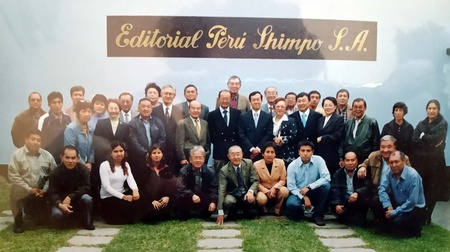
© 2020 Enrique Higa



